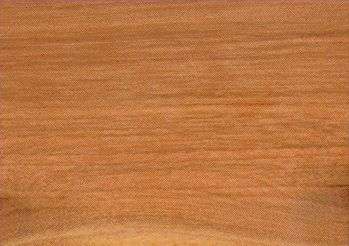
Black fiddlewood (Vitex divaricata)
Family: Verbenaceae
Common names: Black fiddlewood, Bois a agouti, Bois fidele, Fiddlewood, Higuerillo, Ofoncriollo, Pendula, Pendula blanca, Robel guayo, Roble de olor, Totumillo, White fiddlewood
Distributed in: Cuba, French Guiana, Guyana, Haiti, Netherlands, Puerto Rico [US], Trinidad and Tobago, Venezuela (Latin America, Oceania and S.E. Asia)
Common uses: Boat building (general), Boat building: decking, Boat building: planking, Cabinetmaking, Flooring, Golf club heads, Heavy construction, Joinery, Light construction, Posts, Shingles, Sporting Goods, Tool handles
Tree size: Trunk diameter is 200-250 cm
Colors: the heart isRed, Yellowand the sapwoodWhite, Yellow.The grain isOther figures are possible or common, the textureMediumand the lusterSlightly lustrous
Natural durability: Susceptible to insect attack, Very durable
Kiln Schedules: Dry at a slow speed
Kiln Drying Rate: Naturally dries slowly
Drying Defects: Slight twist/warp, Splitting
Ease of Drying: Slowly
Comments: General finishing qualities are rated as satisfactory
Blunting Effect: Little
Boring: Fairly easy to very easy
Carving: Fairly Easy to Very Easy
Cutting Resistance: Fairly Difficult to Very Difficult to saw
Gluing: Fairly Easy to Very Easy
Mortising: Very Good to Excellent
Moulding: Good finishing
Movement in Service: Good finishing
Nailing: Fairly Easy to Very Easy, Very Good to Excellent
Planing: Poor to Very Poor
Resistance to Impregnation: Resistant sapwood
Resistance to Splitting: Poor
Response to hand tools: Responds Readily
Routing recessing: Fairly Easy to Very Easy
Sanding: Satisfactory sanding results
Veneering qualities: Difficult to veneer
Steam bending: Fair to Good Results
Turning: Poor to Very Poor Results
Painting: Very Good to Excellent; Polishing: Very Good to Excellent; Staining: Very Good to Excellent;
- Numerical data Metric
- Numerical data English
- Strength properties
- References
 |
 |
 |
 |
| Item |
Green |
Dry |
Metric |
| Specific Gravity |
|
|
|
| Density |
|
753 |
kg/m3 |
| Bending Strength |
|
|
kg/cm2 |
| Crushing Strength |
|
|
kg/cm2 |
| Hardness |
|
|
kg |
| Impact Strength |
|
|
cm |
| Shearing Strength |
|
|
kg/cm2 |
| Stiffness |
|
|
1000 kg/cm2 |
| Tangential Shrinkage |
|
|
% |
| Radial Shrinkage |
2 |
|
% |
| Weight |
737 |
592 |
kg/m3 |
| Maximum Load |
|
|
cm-kg/cm3 |
| Toughness |
|
|
cm-kg |
| Static Bending |
|
|
kg/cm2 |
|
 |  |  |  | | Item | Green | Dry | English | | Density | | 47 | lbs/ft3 | | Weight | 46 | 37 | lbs/ft3 | | Radial Shrinkage | 2 | | % | | Tangential Shrinkage | 6 | | % | |
Shrinkage, Tangential = small
Shrinkage, Radial = very small
Density (dry weight) = 46-52 lbs/cu. ft.
Brooks, R.L., et al,1941,Durability tests on Untreated Timbers in Trinidad,Caribbean Forester,2(3,pp101-119Little, E.L., Wadsworth, F.H.,1964,Common Trees of Puerto Rico and the Virgin Islands,U.S.A. Department of Agriculture, Agriculture Handbook,No.249Longwood, F.R.,1961,Puerto Rican Woods - Their Machining Seasoning and Related Characteristics,U.S.A. Department of Agriculture, Agriculture Handbook,No.205Marshall, R.C.,1934,Trees of Trinidad and Tobago,Government Printer Port of Spain TrinidadRecord, S.J., Hess, R.W.,1943,Timbers of the New World,Yale University PressTakahashi, A.,1975,Compilation of data on the Mechanical Properties of Foreign Woods (Part 2,Central and South America,Shimane University, Japan, Research Report on Foreign Wood No.4
|








